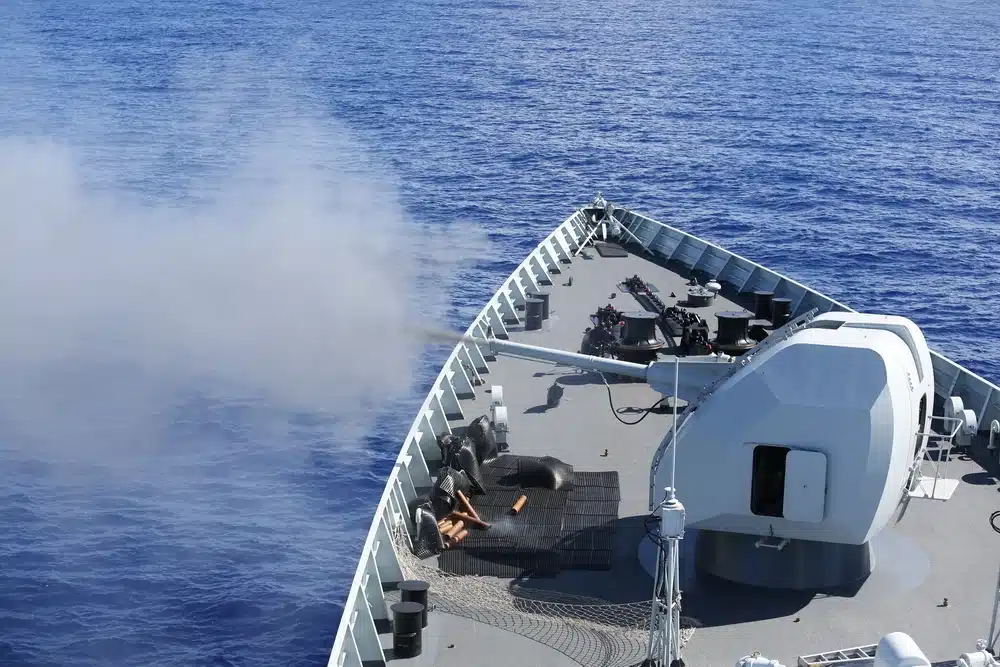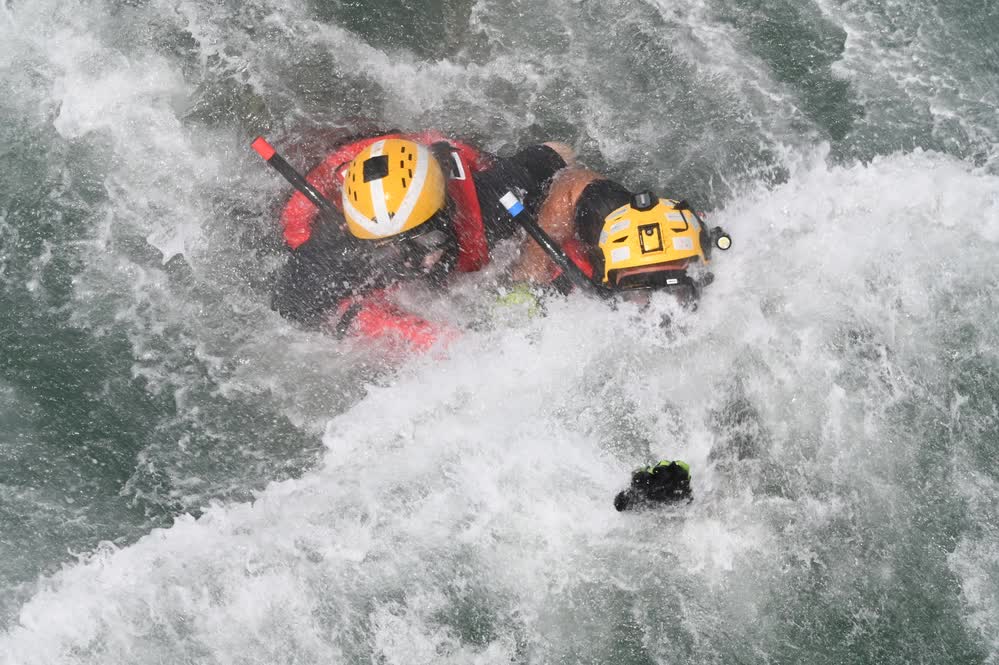The South China Sea has been a major bone of contention between China and the United States. China has claimed nearly the entire South China Sea. It also has a major disagreement with the Philippines, Vietnam, Malaysia, Brunei, and Taiwan over conflicting claims to the Spratly Islands an archipelago of islands, islets, and reefs in the South China Sea.
Now, new details have emerged of the vast military buildup of the Chinese military on the disputed islands that leave little doubt that the Chinese are prepared to press their claims and have no intention of leaving.
China didn’t have a presence in the Spratlys until 1988 when it forced a Vietnamese garrison from Johnson South Reef. In late 2013 and early 2014, China began building up artificial land on selected reefs and atolls. Since then, it has created 3,200 acres of land with these projects.
China breaks its assurances

Since 2014, the Chinese military has engaged in a massive military buildup of the Spratly Islands.
Detailed aerial photographs taken by Ezra Acayan in October 2022 show large hangers, radar domes, and a military KJ-500 airborne early warning and control (AEW&C) aircraft. The Chinese also built a swimming pool, tennis courts, and a running track for their troops.
Latest Aerial Views Of China's Artificial Islands In The South China Sea
— Ezra Acayan (@eacayan) October 27, 2022
Airfields, buildings, recreational facilities, and other structures are seen on the artificial islands built by China in these pictures taken on October 25, 2022 in the Spratly Islands, South China Sea. pic.twitter.com/tOclMNSmkL
Tom Shugart, a senior fellow at the Center for a New American Security, commenting on the pictures said that he was intrigued by the large garage-looking buildings with very tall doors.
“My guess is that the sea-facing garages are for angled cruise missile launchers (for anti-ship YJ-12 or CJ-10 land-attack missiles) left, while the retractable roof buildings are for vertical-launch SAMs (like HQ-9, right),” Shugart said about the buildings appearing in the photos.
Jay Batongbacal, a maritime security expert, added that “Some mobile assets (the aircraft, missile boats, and missile launcher trucks) show they are now operating actively as armed bases for intelligence, surveillance, and reconnaissance.”
Tyler Rogoway of The War Zone also commented on the four garage-like structures, stating that they could be used “to house, service and rapidly deploy transporter-erector-launchers used to fire surface-to-air, anti-ship, and/or surface-to-surface missiles.”
Chinese state media reported that China has a growing population of more than 5,000 “officers and soldiers stationed” on islands and reefs in the Spratly Islands. These reports contradict Chinese President Xi Jinping’s assurances to former President Obama in 2015 that China would not turn the islands into armed military bases.
“Relevant construction activities that China [is] undertaking in the Nansha (Spratly) Islands do not target or impact any country, and China does not intend to pursue militarization,” Xi had said at the time. That was a lie.
Related: Taiwan has big plans for its missiles if China were to invade
Recent history of the Spratly Islands

The Spratly Islands are located between Malaysia and the Philippines. They cover an area of about 158,000 square miles of ocean and consist of a number of reefs, atolls, shoals, and islets.
In the period prior to World War II, France laid claim to the islands. But during the war, Japan occupied the islands and used them as a submarine base.
After WWII, the Chinese Nationalist Government of Chiang Kai-shek occupied Itu Aba, and they kept their garrison there after their defeat at the hands of Mao Zedong and the Chinese communists in 1949. Soon, mainland China, Vietnam, and the Philippines all claimed the islands.
In the early 1970s, the South Vietnamese claimed and occupied three of the Spratly Islands (including Spratly Island itself) to stop the Chinese from occupying them.
Related: Is TikTok spying on you and sending your information to China?
What this buildup means for the region

As seen in Acayan’s photos, China is on the islands to stay. With its military buildup, it can control the shipping lanes and the sea lines of communication to the Philippines and Japan. This might mean that the United States, which has tried to maintain the freedom of navigation through the contested South China Sea, is edging close to open conflict with the Chinese Navy.
The U.S. has often steamed carrier strike groups and other ships, along with those of allies and partner nations, through the area and within close proximity to Chinese naval vessels. This makes the region a powder keg that could easily ignite.
According to U.S. Indo-Pacific commander Admiral John C. Aquilino, the Chinese are flexing their military muscle.
“I think over the past 20 years we’ve witnessed the largest military buildup since World War II by the [People’s Republic of China],” Aquilino said in an interview with the Associated Press. “They have advanced all their capabilities and that buildup of weaponization is destabilizing to the region,” the admiral added.
Feature Image: Chinese Navy guided-missile destroyer Xi’an (153) fires its main gun while conducting a gunnery exercise, during Rim of the Pacific 2016. (Chinese Navy photo)
Read more from Sandboxx News
- Why Russia accused China’s J-20 of stealing its stealth fighter design
- China fears the urban warfare displayed in Ukraine could save Taiwan
- The unique weapons of MACV-SOG’s covert commandos in Vietnam
- Is ‘The Pacific’ better than ‘Band of Brothers’?
- SOCOM’s new prop-driven attack plane can actually help counter China



